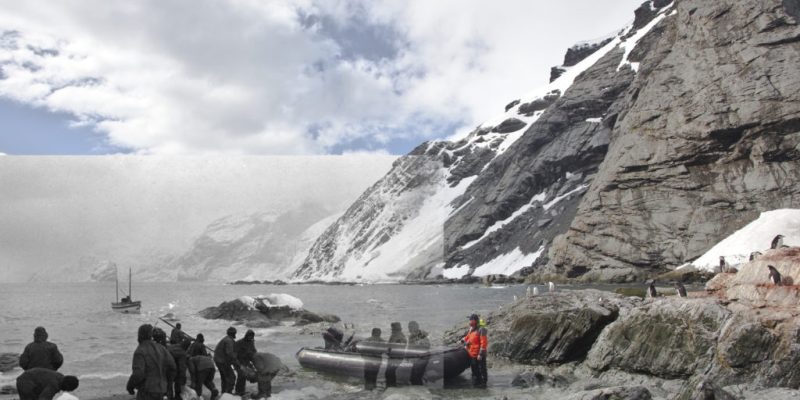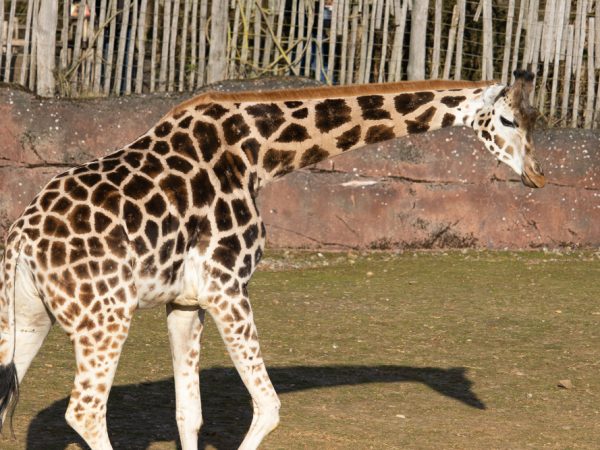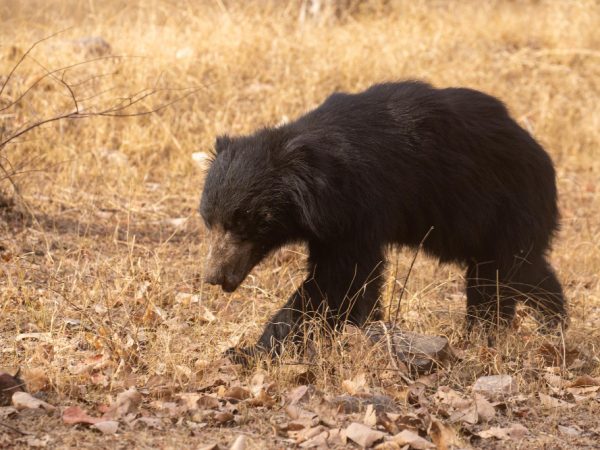Elephant Island Antarctica: Top 10 Wonders of This Remote Destination

Elephant Island Antarctica located in the southernmost reaches of Antarctica, is a place of rugged beauty and historical importance. Situated off the northern tip of the Antarctic Peninsula, it is known for its stark, icy landscape, rich wildlife, and significant role in the survival story of Ernest Shackleton and his crew. Despite its isolation and extreme conditions, Elephant Island has become a symbol of human endurance and a captivating destination for explorers, scientists, and wildlife enthusiasts alike. Here are the top 10 wonders of Elephant Island that showcase its natural beauty, historical legacy, and unique wildlife.
Elephant Island Antarctica: Point Wild: A Testament to Human Endurance
Point Wild, located on the northern coast of Elephant Island, holds a special place in the annals of Antarctic exploration history. In 1916, after their ship, Endurance, was trapped and destroyed by pack ice, Sir Ernest Shackleton and his crew sought refuge at this desolate spot. Led by Frank Wild, 22 men endured the extreme conditions for over four months, waiting for rescue. Today, Point Wild is a place of remembrance, marked by a bronze bust of Captain Luis Pardo Villalón, who led the Chilean ship Yelcho to rescue the stranded men. This landmark serves as a poignant reminder of human resilience and the spirit of exploration.
Elephant Island Antarctica: Cape Valentine: The Initial Landing Site
Located on the northeastern tip of Elephant Island, Cape Valentine is the site where Shackleton’s crew first landed after their harrowing journey across the Weddell Sea. The cape’s steep cliffs and icy conditions provided little shelter, which led the crew to relocate to the more hospitable Point Wild. Despite its initial harshness, Cape Valentine remains a key historical site. Its rugged beauty and the challenges faced by Shackleton’s crew make it an intriguing location for anyone interested in the history of Antarctic exploration.
Elephant Island Antarctica: Endurance Glacier: A Majestic Ice Flow
The Endurance Glacier, flowing from the mountains of Elephant Island, is one of its most remarkable natural features. Named in honor of Shackleton’s ill-fated ship, the glacier spans a vast area, with towering ice cliffs and dramatic crevasses. It is a stunning display of the power of nature and the dynamic environment of Antarctica. The glacier plays a crucial role in the local ecosystem and is essential for the island’s weather patterns. Its imposing presence and the breathtaking views it offers make the Endurance Glacier one of the island’s top wonders.
Elephant Island Antarctica: Chinstrap Penguin Colonies: Vibrant Avian Communities
Elephant Island is home to large colonies of chinstrap penguins, which gather in their thousands on the island’s shores during the breeding season. These charming birds are easily recognized by the black band under their heads and their lively social behaviors. The penguin colonies at Elephant Island are a vital part of the island’s ecosystem, providing a unique opportunity for visitors to observe these fascinating creatures in their natural habitat. The large penguin populations also highlight the health of the region’s marine life, which is essential for their survival.
Elephant Island Antarctica: Seals of Slavyanka Beach: A Pinniped Haven
Slavyanka Beach, located on the southwest coast of Elephant Island, is a relatively ice-free area that serves as a sanctuary for various seal species. Antarctic fur seals and southern elephant seals are commonly found on the beach, particularly during the breeding season. These marine mammals take advantage of the calmer, less icy waters to rest and give birth. The seals’ presence on the beach is a testament to the adaptability of wildlife in Antarctica’s harsh conditions, and it provides a unique opportunity for visitors to observe these fascinating creatures up close.
Elephant Island Antarctica: Mount Pendragon: The Island’s Loftiest Peak
Rising 973 meters above the icy expanse, Mount Pendragon is the highest peak on Elephant Island. Its snow-capped summit is a beacon for mountaineers and adventurers seeking to conquer the harsh terrain. The mountain offers panoramic views of the island and the surrounding Southern Ocean, showcasing the remote and rugged beauty of the region. Climbing Mount Pendragon is an extreme challenge, as the island’s weather conditions can be highly unpredictable. However, the summit provides a stunning view of the Antarctic landscape, making it one of the island’s most sought-after natural attractions.
Elephant Island Antarctica: Historic Wreckage at Hampson Cove
Hampson Cove, located on the southwest coast of Elephant Island, is home to the wreckage of a wooden sailing vessel believed to be the Charles Shearer, a schooner that sank in the early 19th century. The remains of this historic wreck offer a glimpse into the early days of Antarctic exploration and sealing. The site has been designated a Historic Site or Monument, preserving its legacy for future generations. The wreckage at Hampson Cove serves as a reminder of the challenges faced by early explorers and the risks they took to navigate these remote waters.
Elephant Island Antarctica: Diverse Avian Life: Beyond Penguins
While the chinstrap penguins are the most well-known avian residents of Elephant Island, the island also hosts a variety of other bird species. Antarctic shags, kelp gulls, and snowy sheathbills are common visitors to the island’s shores, especially during the breeding season. The rocky cliffs and ice-free areas provide excellent nesting sites for these birds. Observing the diverse birdlife on Elephant Island offers visitors the opportunity to see how these species have adapted to the extreme Antarctic environment, thriving in a world that few other birds could endure.
Elephant Island Antarctica: Geological Wonders: A Window into Earth’s Past
The geological composition of Elephant Island offers valuable insights into the Earth’s tectonic history. The island is part of the Scotia metamorphic complex, which features rocks such as phyllites, blueschists, and greenschists. These rock formations, created by ancient subduction zones, are similar to those found in coastal California and offer a glimpse into the Earth’s geological past. The island’s unique geology provides scientists with the opportunity to study tectonic processes and the history of the Earth’s crust, making it a fascinating destination for geologists and Earth science enthusiasts.
Marine Life Surrounding the Island
The waters around Elephant Island are teeming with marine life. Species such as fin whales, orcas, and a variety of seals and seabirds frequent the region, drawn by the rich feeding grounds. The marine ecosystem surrounding Elephant Island is an essential part of the Antarctic food chain, with krill and other small marine organisms providing sustenance for larger predators. The abundance of marine life highlights the ecological importance of the region and emphasizes the need for continued conservation efforts to protect the fragile Antarctic ecosystem.
Conclusion
Elephant Island Antarctica is a destination of remarkable natural beauty, historical significance, and ecological importance. From the survival story at Point Wild to the breathtaking landscapes of glaciers and towering peaks, this remote island captures the imagination of those who venture there. Whether you are drawn to its fascinating history, unique wildlife, or geological wonders, Elephant Island offers an unforgettable experience for those looking to explore one of the last great wildernesses on Earth.
FAQs
Q1.What is the best time to visit Elephant Island Antarctica?
The best time to visit Elephant Island is during the Antarctic summer, from November to March. During this period, the weather is milder, and wildlife, including penguins and seals, is more active, making it an ideal time for exploration and wildlife viewing.
Q2.How do I get to Elephant Island?
Access to Elephant Island is typically by boat or expedition cruise, departing from Ushuaia, Argentina. Due to its remote location, reaching the island requires specialized Antarctic tours that cater to adventurers and researchers.
Q3.Is Elephant Island Antarctica safe for tourists?
While the island’s extreme weather conditions and isolated nature make it a challenging destination, it is generally safe for tourists who visit with experienced guides and as part of an organized expedition. It is crucial to prepare for harsh conditions and follow the guidance of experts.
Q4.Can I see penguins and seals on Elephant Island?
Yes, Elephant Island is home to significant populations of chinstrap penguins, as well as seals such as the Antarctic fur seal and southern elephant seal. Visitors can observe these fascinating creatures in their natural habitat, especially during the breeding season.
Q5.What historical significance does Elephant Island have?
Elephant Island is historically significant as the site where Ernest Shackleton’s crew sought refuge during the ill-fated Endurance expedition in 1916. Point Wild, on the island’s coast, served as their camp for over four months while they awaited rescue, making it a key location in Antarctic exploration history.
Also read: 23 Upper Weld Road: Discover a Historic Gem in Singapore’s Vibrant Neighborhood











